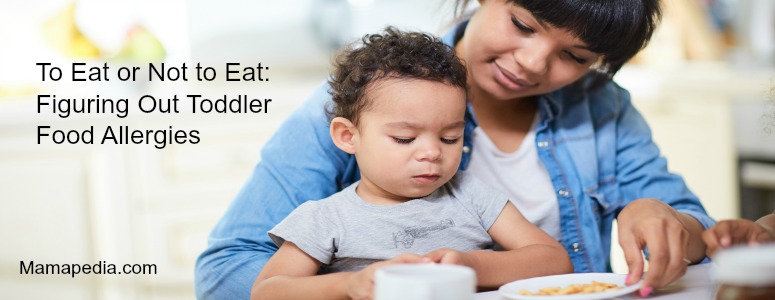
To Eat or Not to Eat: Figuring Out Toddler Food Allergies
Approximately 15 million children have some type of food allergy, reports the advocacy organization Food Allergy Research & Education. That sounds like a lot of kids, but it’s still a relatively small 7.6 percent of children. You don’t want to assume your toddler has an allergy as he’s just starting to explore whole foods; you’ll narrow his food choices and potentially deprive him of some nutrients and the development of a full palate.
But, just jumping in and letting your toddler eat everything seems like a gamble. And, if your child ends up with a stomach ache, diarrhea, rashes, behavior issues or hives, you can’t be sure if it’s a food allergy or something else.
Figuring out if your toddler has a food allergy and how it’s affecting him is not easy, but possible.
What are Food Allergies?
Food allergies are abnormal reactions of the immune system to a normally harmless food. Common allergens include eggs, peanuts, milk, shellfish, wheat, soy, fish and tree nuts.
Reactions to these foods can range from mild to serious, even life threatening. Don’t confuse intolerances with allergies. You might not feel good after eating a food to which you’re intolerant, but it’s not an allergic reaction.
Many children outgrow their food allergies by time they’re in grade school. Allergies to certain fish and peanuts tend to persist through adulthood, however.
What to Do If You Expect Your Child Has an Allergy?
If you suspect your toddler has a food allergy, the first thing to do is contact your child’s pediatrician who can help you take the next course of action. If you’re afraid the allergy could cause life-threatening complications, it’s important to have a detailed diagnosis and treatment plan in case of emergency.
If your toddler’s reactions seem to be milder – such as diarrhea, stomach cramps, rashes, or tingling in the mouth – you do want to find the cause. Sometimes food allergies can increase in severity the more the food is ingested.
A food diary provides a detailed log of what your child has eaten, and the possible effects. Write down what your child eats and any symptoms or side effects, including fussiness, gastrointestinal distress or rashes. This will help you identify the possible allergens and, when you head to the doctor, give details about how long after your child eats he develops symptoms.
Healthy Low-Risk Snack Options
If your toddler has a food allergy or allergies, you may be challenged to find snacks that satisfy without causing a reaction. Melissa Caiyem, the Nutrition Program Coordinator at Life Time Fitness in Colorado Springs, Colorado says “fruit with sunflower butter, guacamole and cut-up vegetables and healthier chips, such as veggie straws,” are good low-risk options.
And even if your child has a food allergy, remember to “keep added sugars to a minimum,” reminds Caiyem.
Andrea Cespedes is a professionally trained chef and a Certified Nutrition Therapist. With more than 20 years of experience in the fitness industry, she coaches cycling and running and teaches Pilates and yoga. She is an American Council on Exercise-certified personal trainer, RYT-200 and has degrees from Princeton and Columbia University. She’s the proud mom of two kids, who love dance, rock climbing and animals.